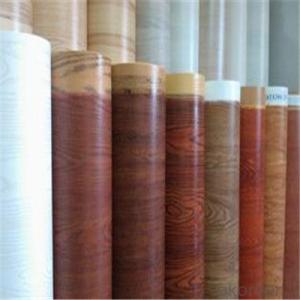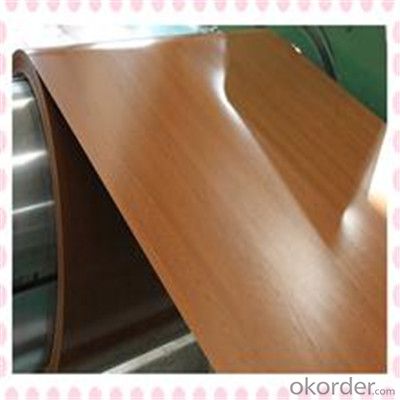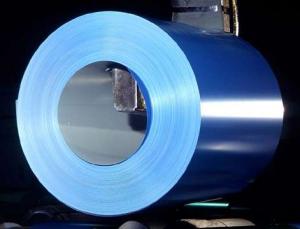Wood Pattern Coated Galvanized PPGI Steel Plates
- Loading Port:
- Shanghai
- Payment Terms:
- TT OR LC
- Min Order Qty:
- 30 m.t.
- Supply Capability:
- 1200000 m.t./month
OKorder Service Pledge
OKorder Financial Service
You Might Also Like
Specification
Description of Glove:
1. Environment friendly
2. Lower cost and maintenance
3. Long using time up to 10 years
4. Fast construction, time saving and labor saving
5. Easy cleaning
6. Antistatic
Festures of Glove:
Building industry | Outdoor application | Roof, structural balcony, panels, window sills, window frames, gates, garage doors, rolling doors, booths, shutters, watch rooms, makeshift houses, street waiting room (booth), refrigerators, etc. |
Indoor application | Room doors, dividing walls, door frames, light house steel structures, sliding doors, screens, ceilings, toilets, interior elevator lobby, stairwayventilating duct, communication pipelines. |
Specifications of Glove:
1. Aesthetics: Pre-Painted Galvanized steel sheet is available in plethora of patterns and multiple sizes as per the requirements that given by our customers.
2. Versatility: can be used in the various areas.
Images of Glove:

FAQ:
1.What about the delivery.
We can arrange the shipment about 15-25 days after the deposit.
2.What about payment term?
30% T/T deposit, balance against B/L copy.
Full T/T payment if quantity less than MOQ.
3.How much about MOQ?
Normally 100pcs,but small order is acceptable as well.
- Q: How do steel coils contribute to the strength and durability of structures?
- Steel coils, being made of high-strength steel, contribute to the strength and durability of structures in multiple ways. Firstly, the tightly wound coils provide structural stability and support, enabling the construction of large-scale buildings and infrastructure. Additionally, the inherent strength of steel allows it to withstand heavy loads, impacts, and extreme weather conditions, ensuring long-lasting durability. Furthermore, steel coils offer excellent resistance against corrosion and fire, further enhancing the structural integrity and lifespan of the structures they are used in.
- Q: I was reading about the Colt 38 Super Custom and it said it's optional between a carbon steel frame or a stainless steel frame. What is the difference? There is also a choice between aluminium or stainless steel hammers and triggers can you also tell me the difference between them please?
- Carbon steel is harder but does not resist corrision as well. It really depend on the grade. Like 440A is crap and 440C is much better. Aluminum would be the way to go. It is lighter and just as if not stronger. Some people will be die hards when it comes to either metal. I don;t know much about the guns. I know plenty about different grades of sttel when I collected swords and knives.
- Q: Can you recycle steel? And if you wanted to buy some recycled steel, where would you get it?
- Yes; steel can be recycled. Look on the Internet for dealers who sale recycled steel. Good luck! Smile!
- Q: Can cold rolled galvanized steel coils be acid washed after oxidation?
- Rolling at room temperature is generally understood as cold rolling, from a metallurgical point of view, below the rolling temperature at which the roll is rolled
- Q: How are steel coils used in the production of infrastructure materials?
- The durability, versatility, and strength of steel coils make them widely used in the production of infrastructure materials. Typically, these coils are made from hot-rolled steel, forming large rolls or coils that are easily transported and handled. One common application of steel coils in infrastructure materials involves producing steel sheets and plates. These coils can be further processed to create flat sheets of steel, which are then utilized in various construction purposes. For instance, steel sheets are frequently employed in manufacturing bridges, highways, and buildings due to their ability to withstand heavy loads and adverse weather conditions. Another important use of steel coils in infrastructure materials is manufacturing pipes and tubes. Steel coils are often processed into seamless or welded pipes that find usage in water and gas pipelines, as well as the transportation of liquids and gases. Infrastructure projects prefer steel pipes and tubes due to their high strength, corrosion resistance, and ability to endure high-pressure environments. Moreover, steel coils are also employed in the production of reinforcing bars or rebars, crucial components in the construction of reinforced concrete structures. These rebars, made from coiled steel, are embedded within concrete to provide tensile strength and enhance the structural integrity of buildings, bridges, and other infrastructure projects. Steel coils enable efficient production of rebars, ensuring consistent quality and size for reinforced concrete constructions. In conclusion, the use of steel coils is essential in the production of infrastructure materials. Their contribution to manufacturing steel sheets, pipes, and rebars ensures the durability, strength, and reliability of infrastructure projects. By providing a versatile and robust material, steel coils contribute to the development of safe and long-lasting structures in our built environment.
- Q: steel structure
- Disadvantages Of Steel
- Q: an 18k steel and gold, screw style bracelet how much would it be worth?
- Steel does not come in an 18k version and is worth only about $1.50/pound. 18k gold (.750 or 75% pure) is currently worth about $40.20/gram, based on the spot price of gold of $1,667/ounce at this moment.
- Q: could someone please explain to me in detail the functions of stainless steel wall ties?
- `You are not asking why they are stainless steel, but the function of wall ties. During construction of a house the wall ties start at damp proof course level. At all reveals ie doors /windows, one tie is placed on every 3rd course of bricks and 6 back from the reveal. Thereafter in the main run of brickwork 1 tie is placed every metre distance, starting at the DPC and the 6th course then the 12th and so on. They are not placed directly above each other, but in a sort of pyramid fashion. Their purpose is to hold the 2 skins of walling together, thus doubling the strength of the cavity wall in a very effective way. Stainless steel is a better quality of tie, but are not really necessary these days, because the cavity is insulated. In the old days you got condensation in the cavity and the ties rusted, and as a result of this disintegration you got bulging walls where one wall fell away from the other. Stainless steel lasted much longer because they did not rust so easily.
- Q: What are the common coil surface treatments available for steel coils?
- The common coil surface treatments available for steel coils include galvanizing, galvannealing, electro-galvanizing, and painting.
- Q: What really is the difference between stain-less steel and iron? I only know that iron is an element, and stain-less steel is an alloy...but what else is there?
- alloy is a mixture of multiple metals or some other elements. like some steel is mixed with carbon and iron so that alloy is more hard than the pure iron. some of them is mixed with aluminium and iron. that's all depends on the requirement.
Send your message to us
Wood Pattern Coated Galvanized PPGI Steel Plates
- Loading Port:
- Shanghai
- Payment Terms:
- TT OR LC
- Min Order Qty:
- 30 m.t.
- Supply Capability:
- 1200000 m.t./month
OKorder Service Pledge
OKorder Financial Service
Similar products
Hot products
Hot Searches
Related keywords



























